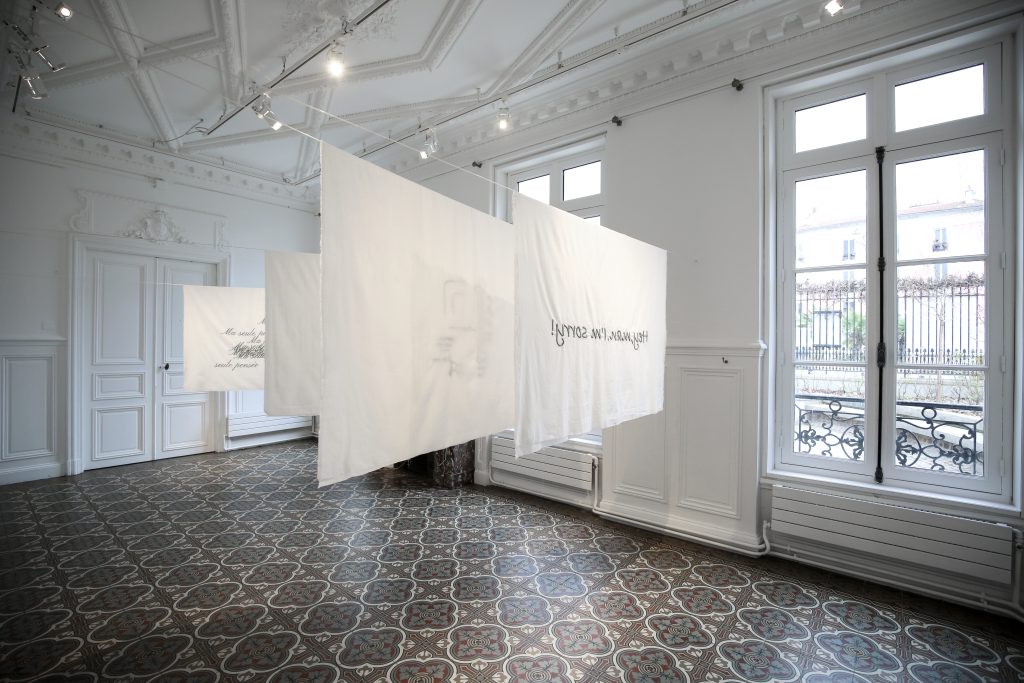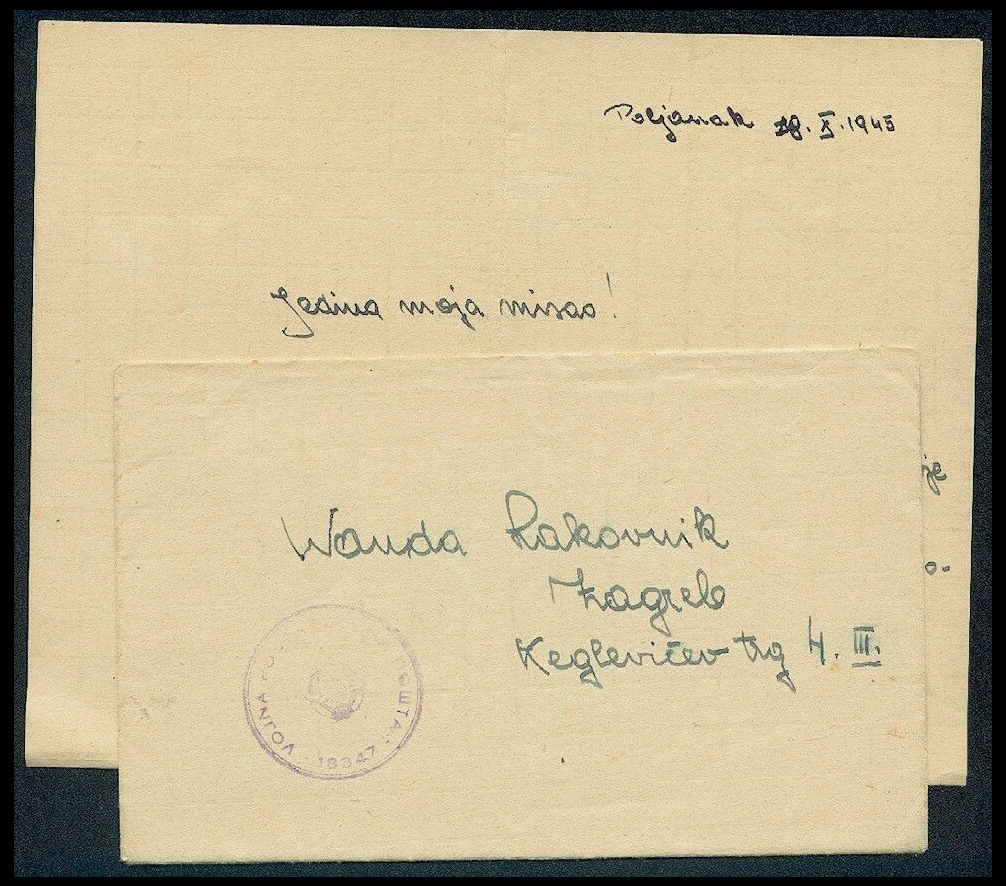ECHOS, 2022
There is no longer much point in weaving or embroidering, but the time invested in this work gives it a lot of value, like something sacred in today’s world where everything can be done very quickly. Some things resist, they take time. This is why I chose to interpret through embroidery certain excerpts from the life of resistance fighters who were locked up in the fort of Romainville, but also destinies that lead to racism, fear of the other, homophobia or even police violence. Questions that we thought were resolved but which are not and which come back stronger than ever. The hanging fabrics are reminiscent of laundry drying, summoning domesticity, the home, a space where one feels safe. What is embroidered on the fabrics is actually the complete opposite of that.
Hey Man
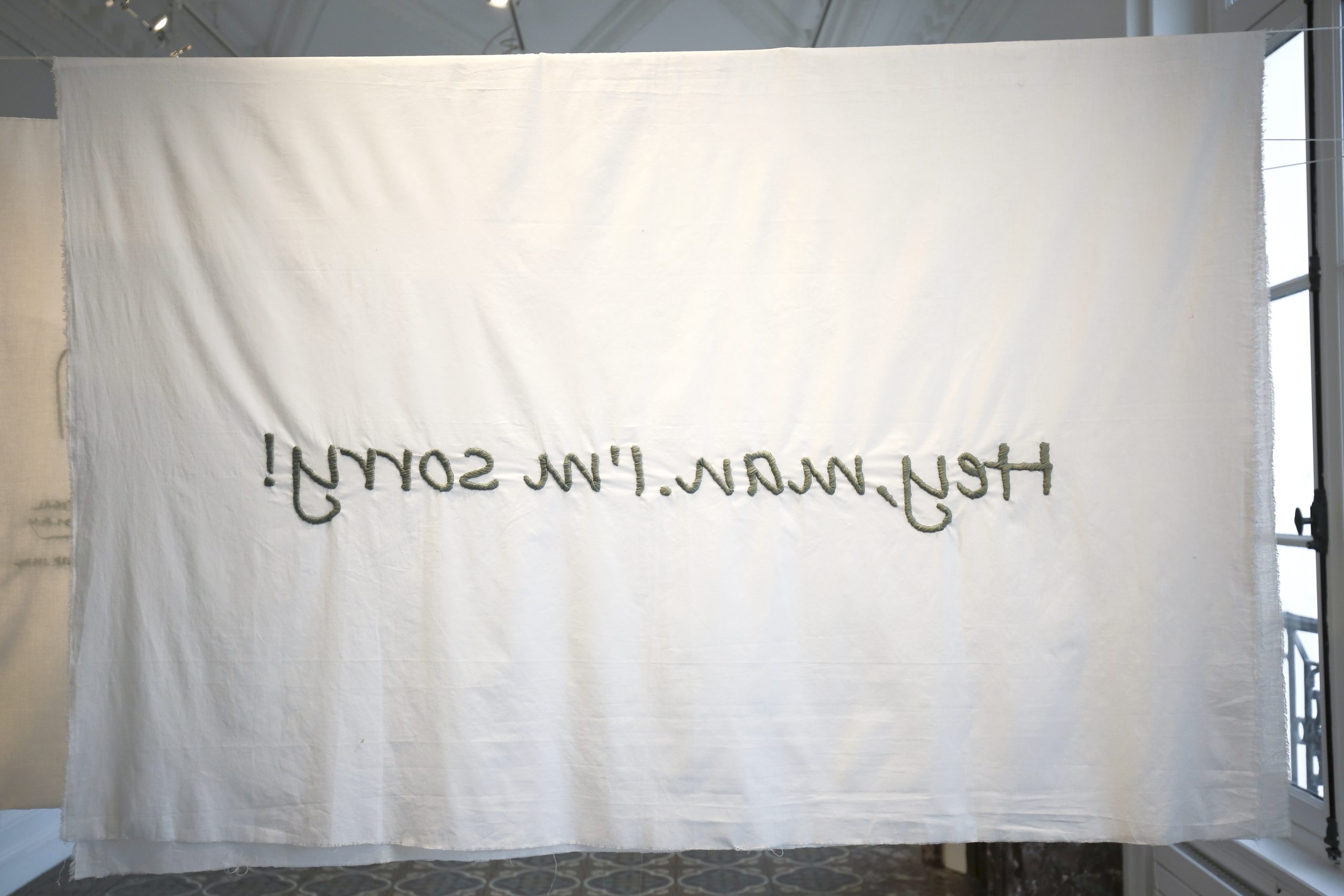
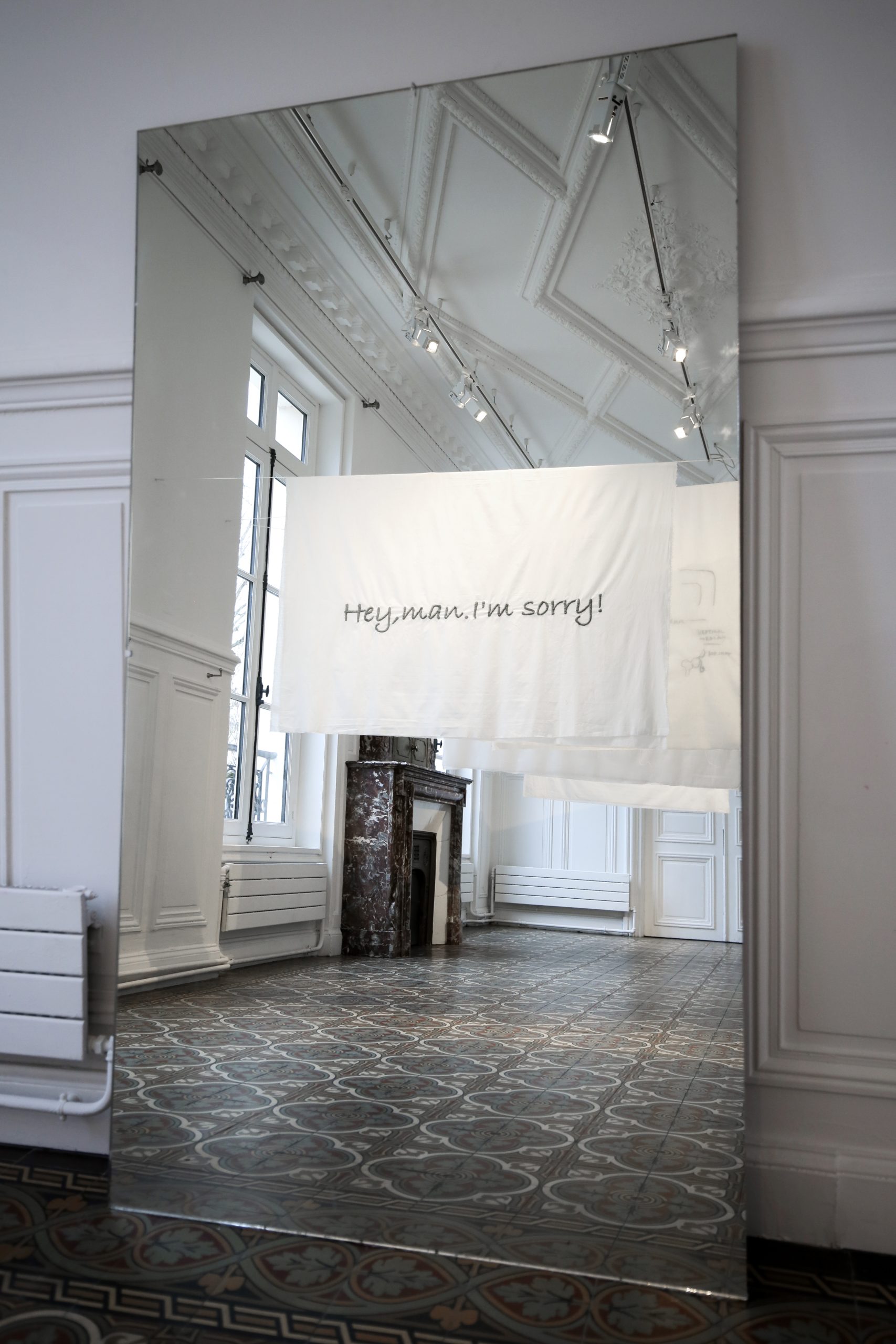
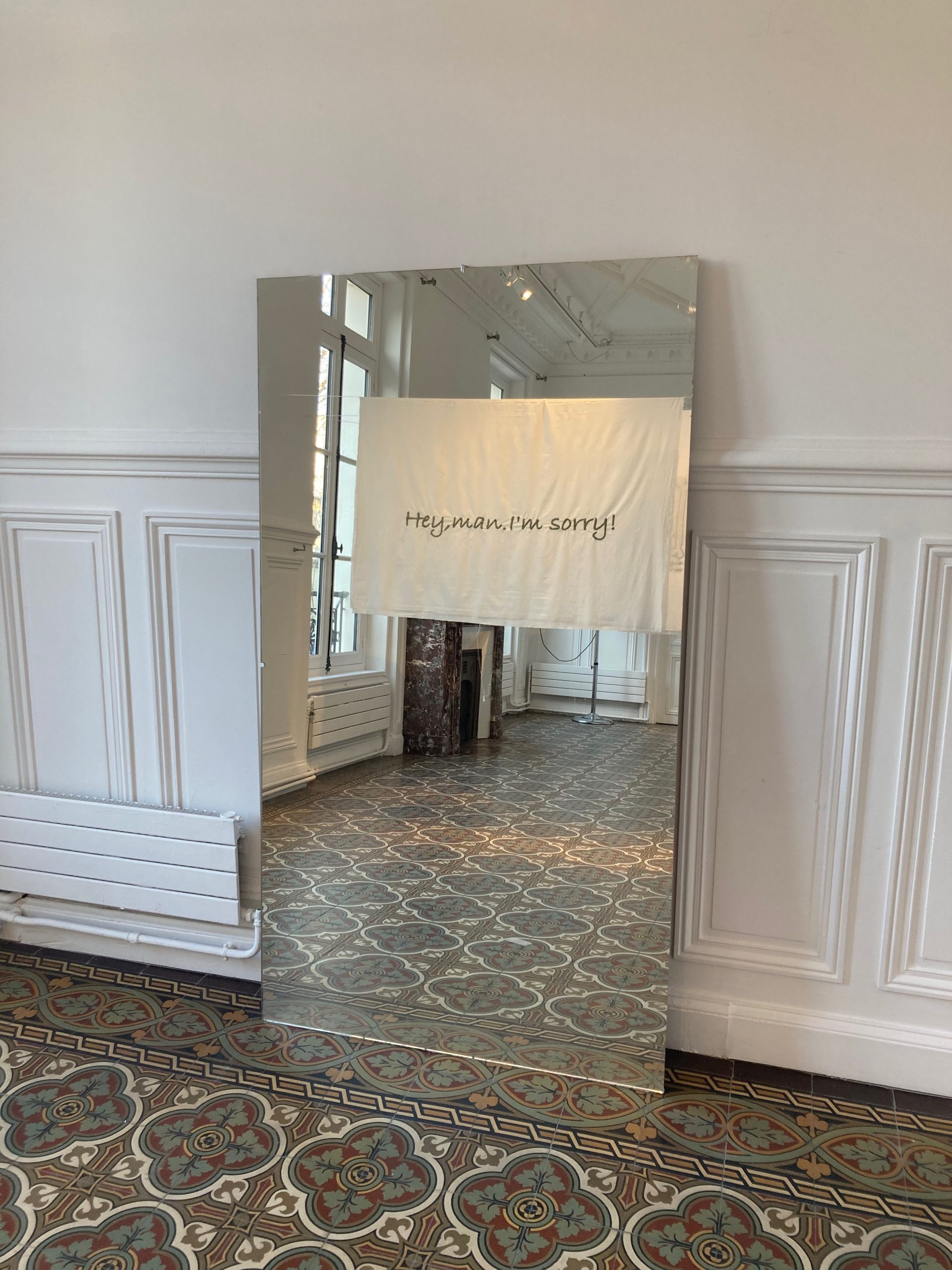
Description
This embroidery cannot be understood at first glance and refers to the tragic fate of George Floyd. The words are written flipped and can only be read by looking at them in a mirror and therefore behind our own reflection. Looking in the mirror, there is this echo that challenges us “Hey Man, I’m sorry”, the first thing that Georges Floyd said when the police arrested him. This device, which includes the visitor, sends him back to himself and confronts him with the story and these words. It also allows everyone to interpret this piece with their own image, their own story, their own identity.
The Knee
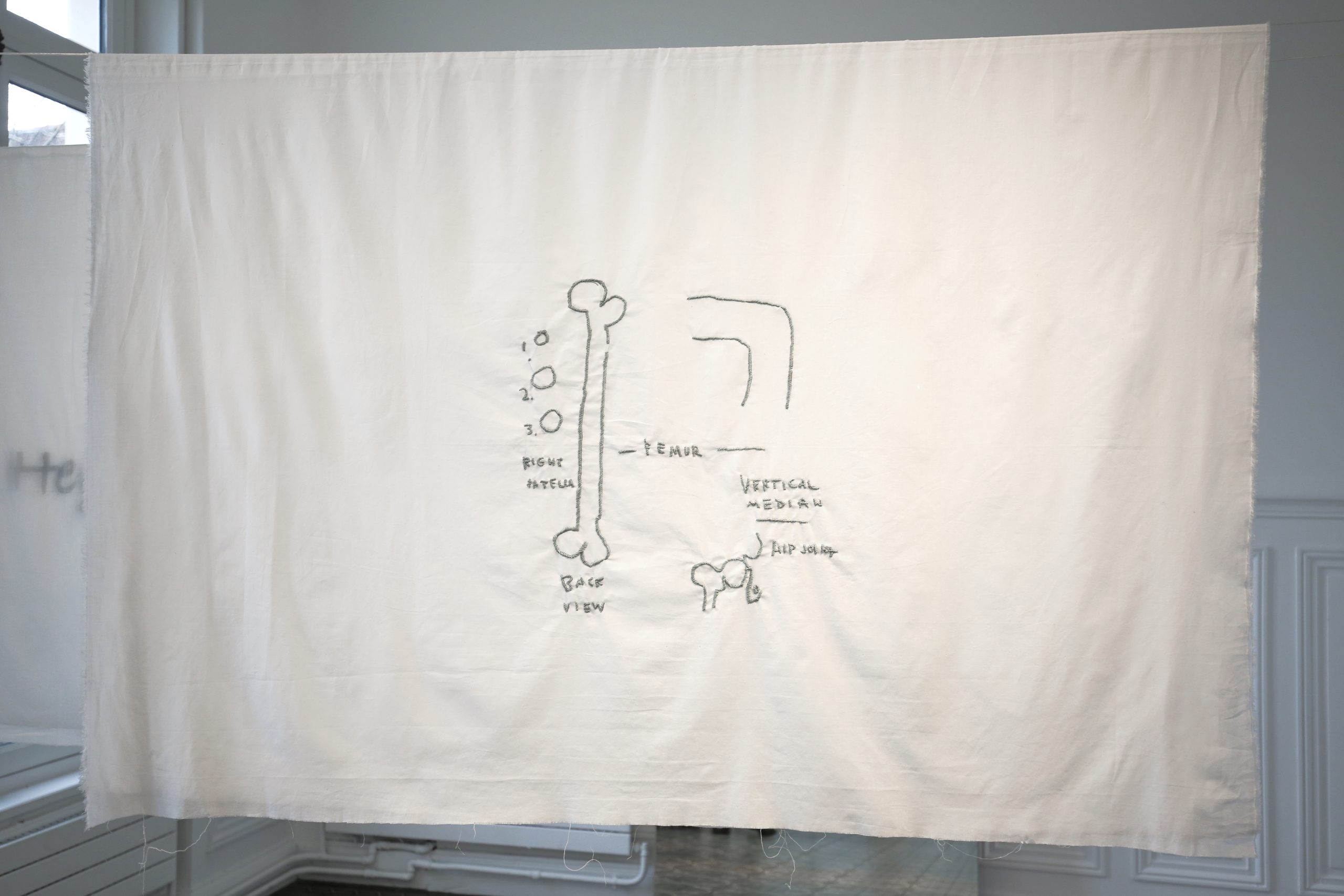
Description
This pattern is inspired by the drawing of a knee made by Basquiat. When he was very young, he was hit by a car. He spent a lot of time in the hospital studying anatomy from a book his mother gave him. I associated this drawing with the images of the assassination of George Floyd and this new technique used in the world by the police force to neutralise people they want to arrest. This technique is prohibited but practiced in the United States and still allowed in the world and in particular in France. Unfortunately, it is often used disproportionately. This posture can seriously injure or even worse kill, as was the case for George Floyd in the United States and Cédric Chouviat in France.
Ma seule pensée
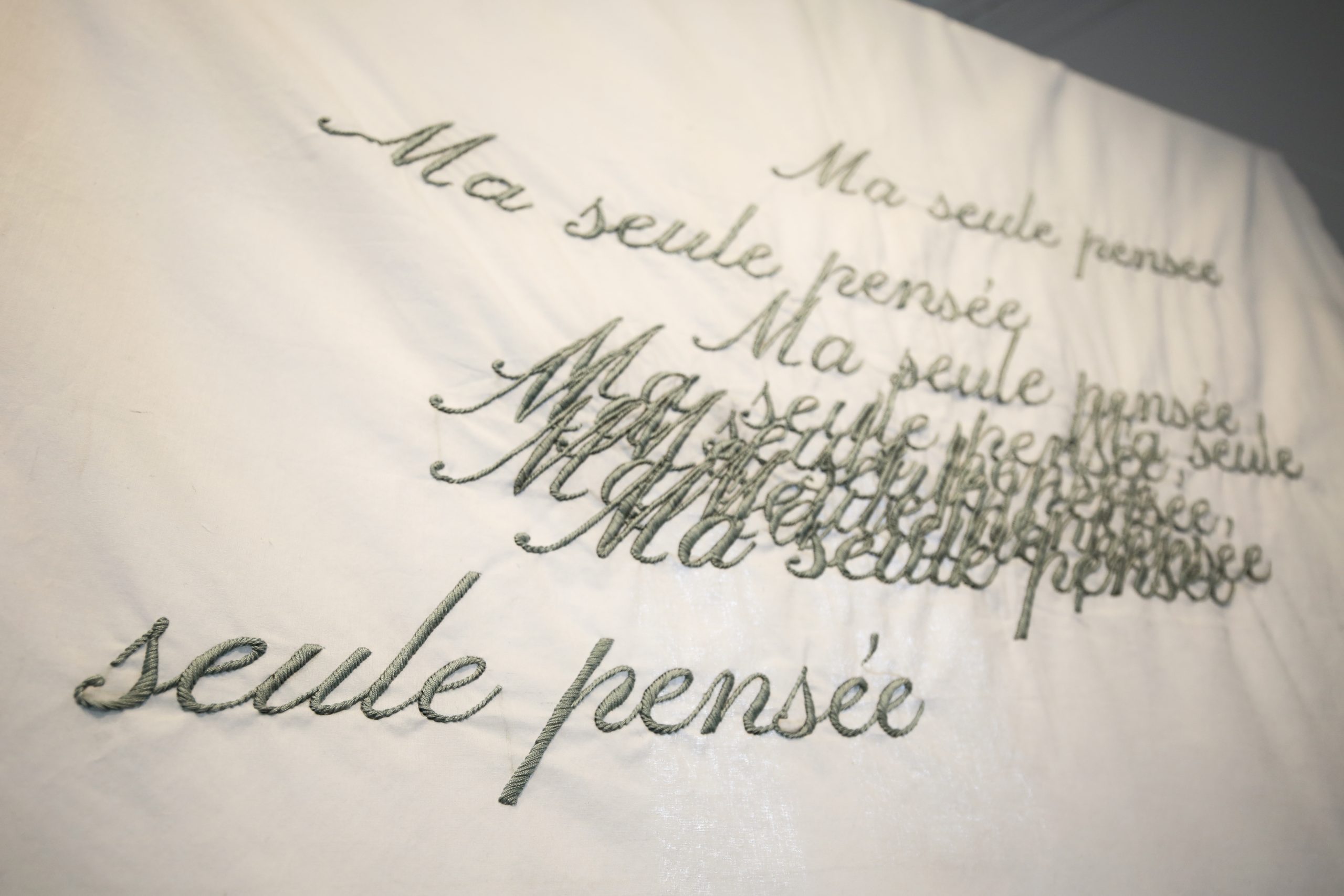
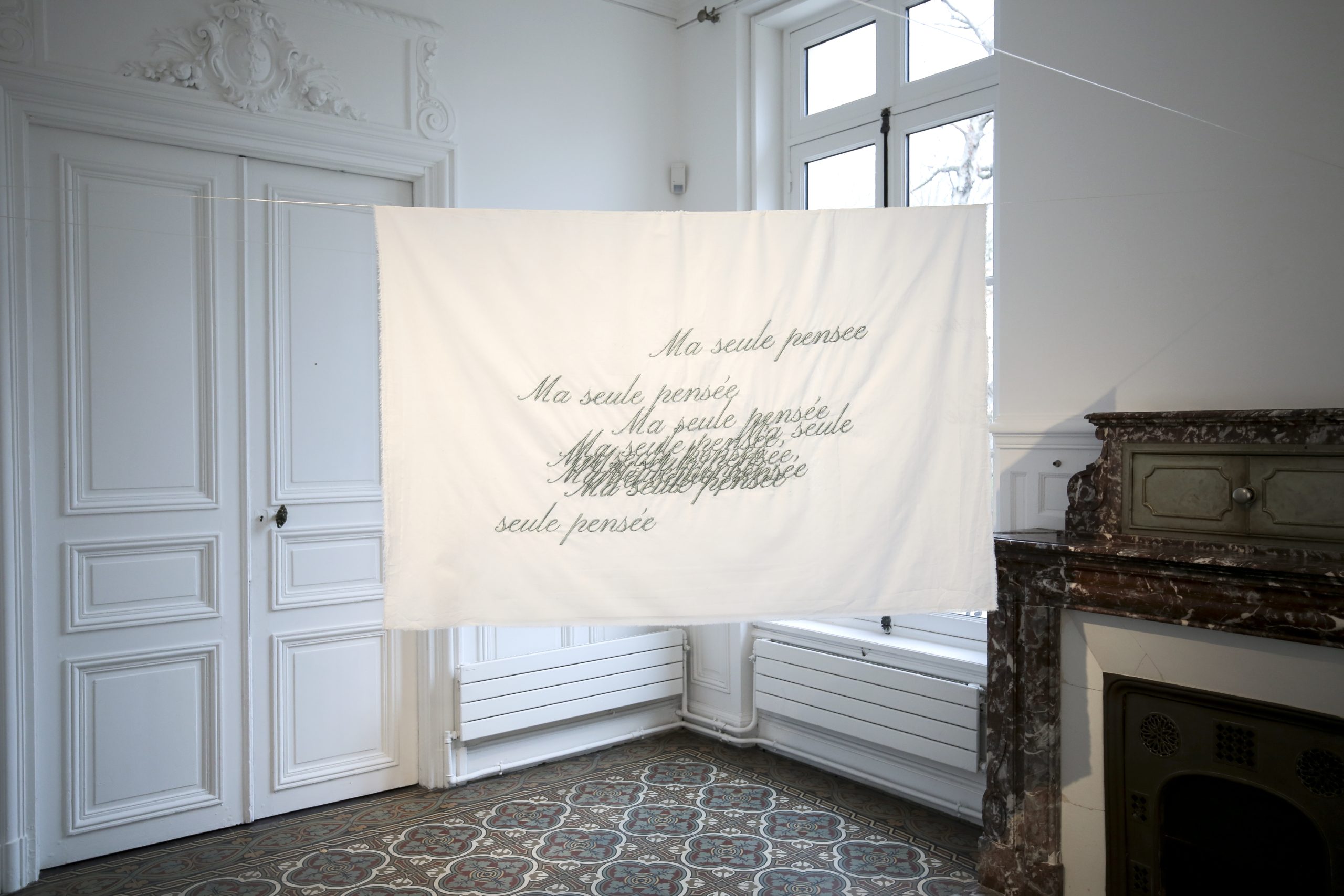

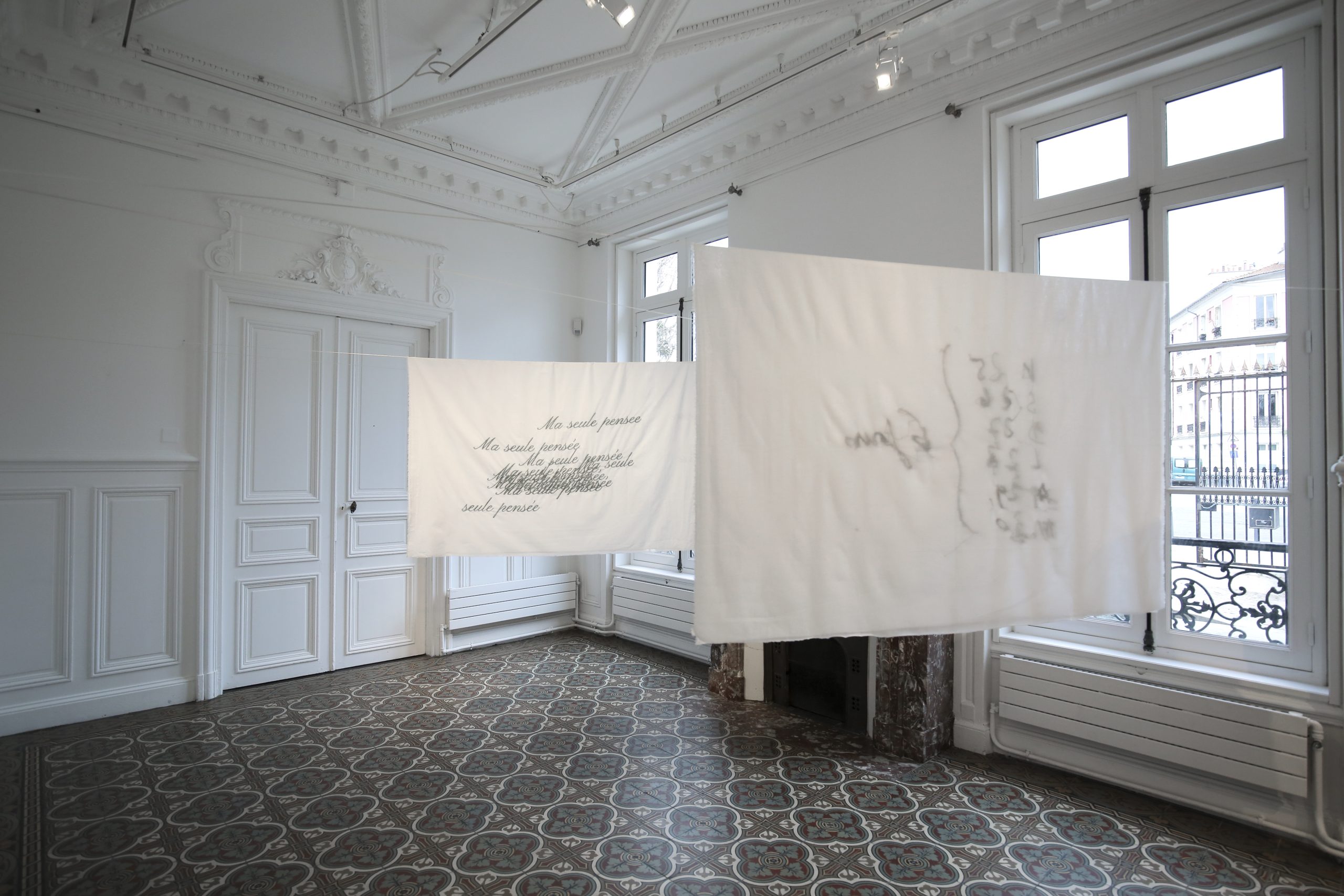
Description
While doing research, I discovered that today you can buy letters from the resistance fighters sent during the Second World War on eBay. For me, this is a symptomatic absurdity of our time when everything can be bought, everything is for sale. While looking on the site, I came across a letter of which only the incipit could be read for free. It reads “My only thought”. It is with these words that a resistant, we do not know if it is a man or a woman, addressed himself in a letter to his love. I found it very poignant and poetic. I think the feelings that this sentence carries brings us closer to this moment in history, as if it were addressed to us. History often tells us coldly about what happened. A love letter allows us to put ourselves in the shoes of the people who have experienced it.
Six Jours
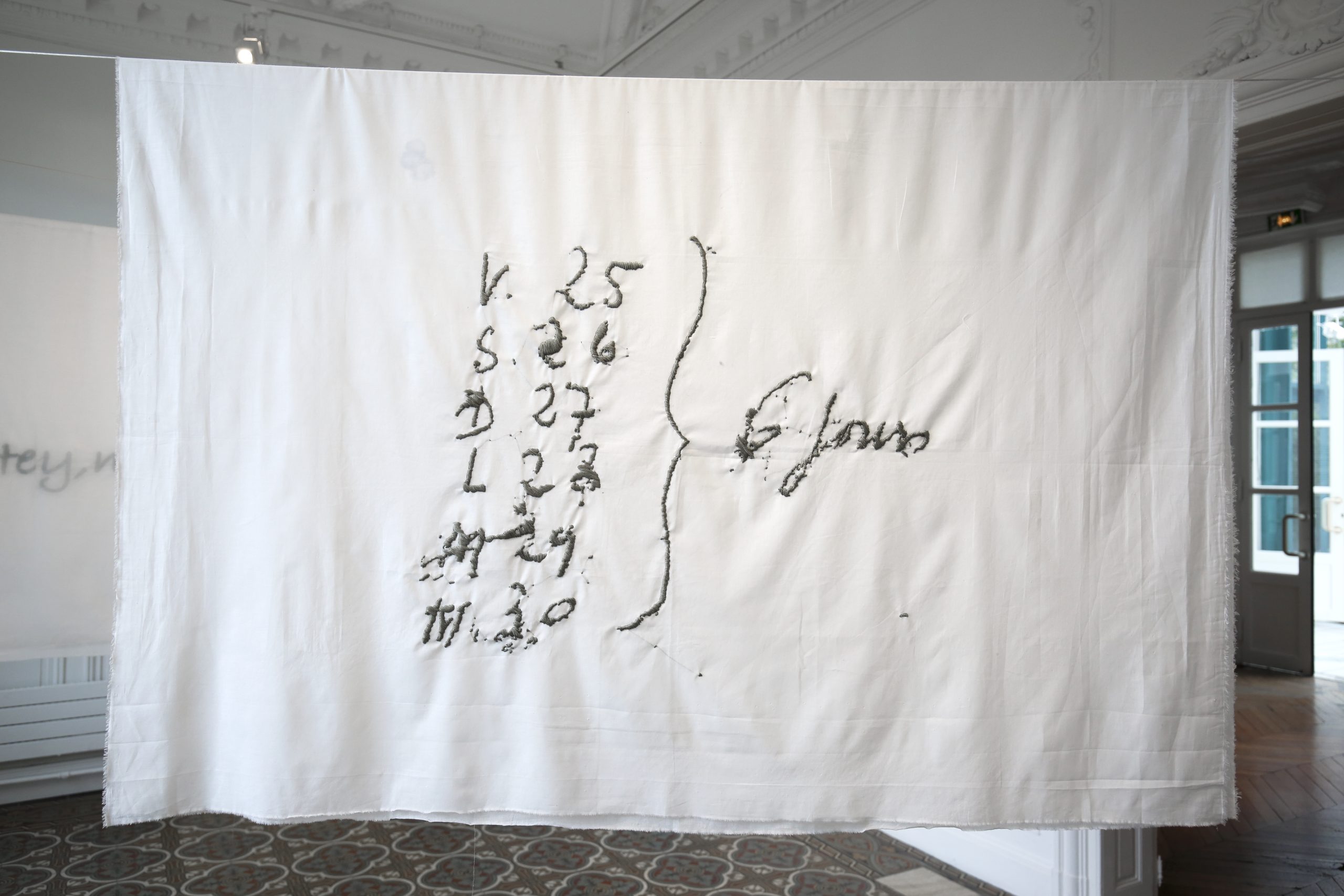
Description
This embroidery is linked to the Fort of Romainville. This is a graffiti drawn in the cell 17, where the prisoners were locked up waiting to be deported to the extermination camps. Day after day, six in total, the person has marked the passage of time on the wall as if to maintain a relationship with life and its temporality of which they were deprived by confinement. It is a graffiti that is often found in prisons, which allows to keep a landmark, to remain human and not to cut the thread that still connects one to the outside world.
Le mur mangeur
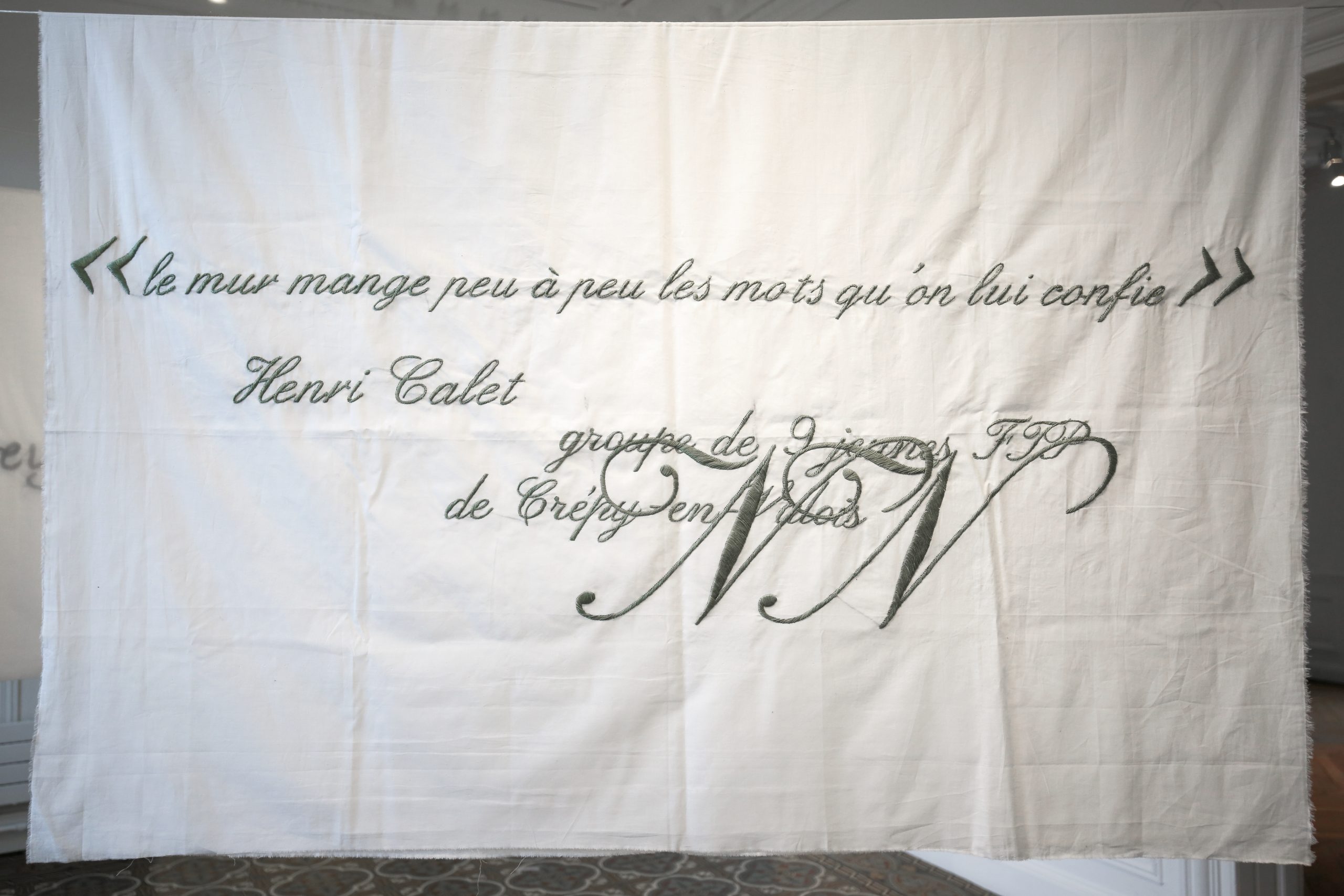
Description
This other graffiti on the walls of the Fort Romainville testifies to the prisoners’ need to leave a trace of their experience so that something can survive them. Here, a French resistance fighter writes: “little by little the wall eats up the words entrusted to it”. Today the traces of the passage of the resistants locked up have disappeared or are threatened with disappearance, as in the cells of Fort Romainville.
Nacht und Macht
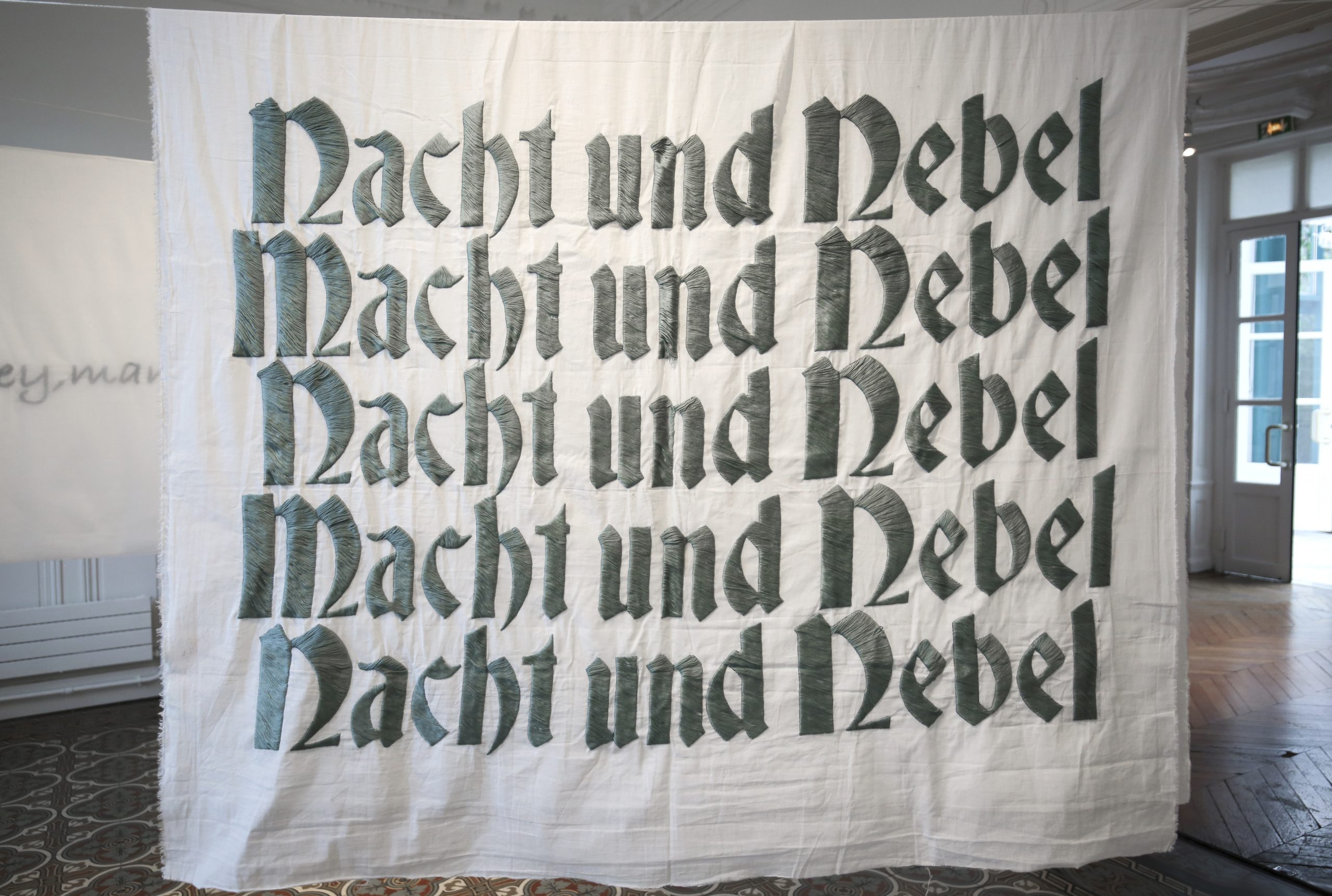
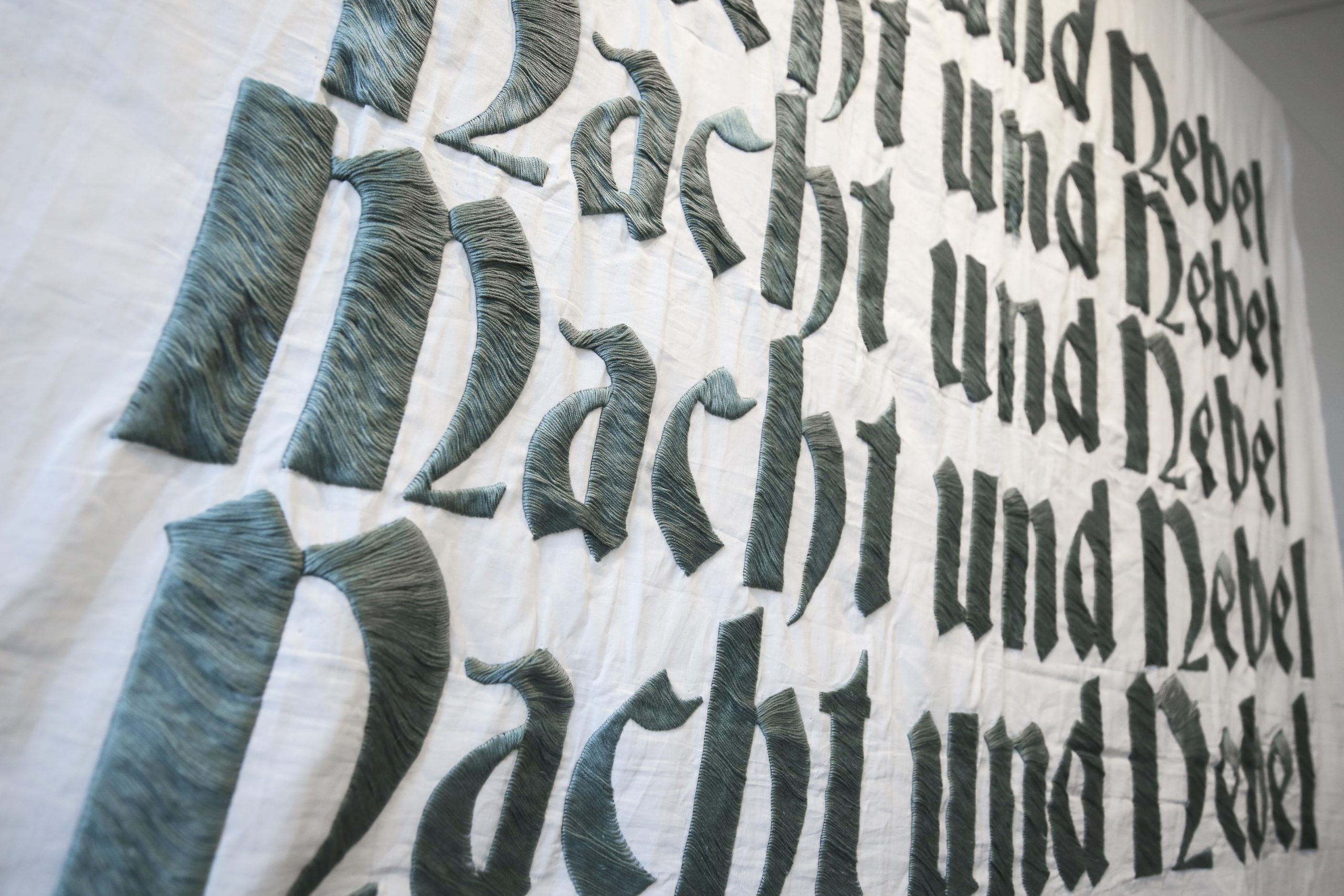
Description
This embroidery in Gothic letters tells us about a Gestapo operation that gave the Gestapo the freedom to carry out mass arrests with complete impunity: Operation Nacht und Nebel, which means “night and fog”. By changing one letter it becomes “Macht und Nebel”, which means “power and fog”. This letter that transforms the night into power is an almost Lacanian idea: power takes advantage of the opacity of the fog to act as it pleases without control or responsibility.
